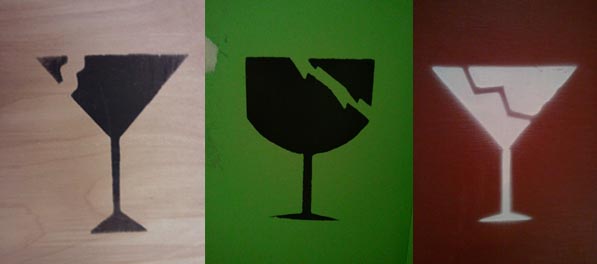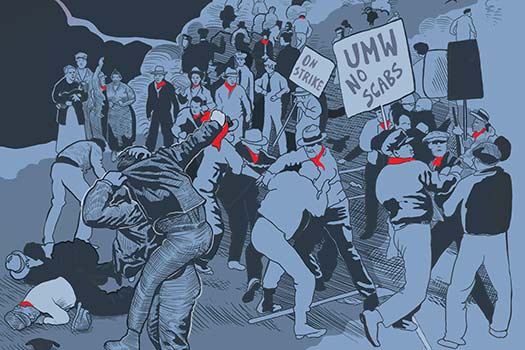
Last week, on the sly, I went around with my phone’s camera and took pictures of all of the variations on the “Fragile” icon from shipping crates at the museum I’m currently temping at. Some of them are simple, and others provided interesting (and rather humorous) variations on a theme while still maintaining the essence of the directive.
I’ve been working in museums and art galleries for almost twelve years now as an “art handler” (or “preparator”). This work has run the gamut from small, artist-run spaces in collapsing warehouses to upper-echelon, high-budget art museums. These past few weeks I’ve been on the job at such a museum, packing up a huge exhibition we mounted last fall of furnishings amassed from World’s Fairs over the years…

The infrastructure surrounding the movement of these cherished objects is an industry unto itself, the quiet background labor of registrars, conservators, truck drivers, curatorial assistants, crate builders, couriers, painters, security guards, pilots, and handlers like myself. Untold amounts of effort are spent at preservation of singular objects deemed to be of great worth, and the sheer amount of materials dedicated to their preservation, per object, can be staggering. Often these preservation and packaging materials are manufactured specifically for their ability to outlast the Earth while not marring or off-gassing upon the heavily-insured objects (either while en route to an exhibit or while dormant in a storage facility). Obscure (to most of us) materials with names like Dartek and Volara, as well as copius tonnage of pine and poplar, are committed to the packaging of these objects… and then there’s the fuel burned in diesel trucks, airplanes, and cargo ships to bounce these objects from museum to museum over the years so people can see them. Most days, I can’t help but to ruminate cynically on the colossal amount of “stuff” committed to the preservation of these singular objects… but I will digress a little for now and focus on something else: these stencils!

As can be expected, a big part of my job is to make sure that these objects don’t break. In the exhibit I’m working on now, we’ve been re-packing items into massive shipping crates from all over the U.S. and Europe – they are moving to another museum next week. There’s an iconography to these crates meant to quickly transcend language barriers as they move over borders and through customs, and these symbols are not too obscure for anyone who’s ever received a box of something perishable in the mail.

Arrows usually indicate the right “ride” orientation for the crate, umbrellas seem to be the universal indicator not to get the crate or it’s contents wet, and the wine glass – sometimes more of a goblet, occasionally a martini glass with or without a speared olive – usually means that the crate contains glass or, more broadly, that it contains anything that could easily break. These images are almost always stenciled onto a painted crate, but with variation: the glass in the icon is sometimes whole, sometimes cracked or with a snapped stem, and sometimes worse: observe the glass above obliterated into dozens of hurtling shards! These symbols may even remind workers of the fine martinis they can readily imagine the museum’s management toasting over lunch as you continue to shove endless crates about the place, day after day…

Hope you enjoy these images as much as I enjoyed collecting them!







